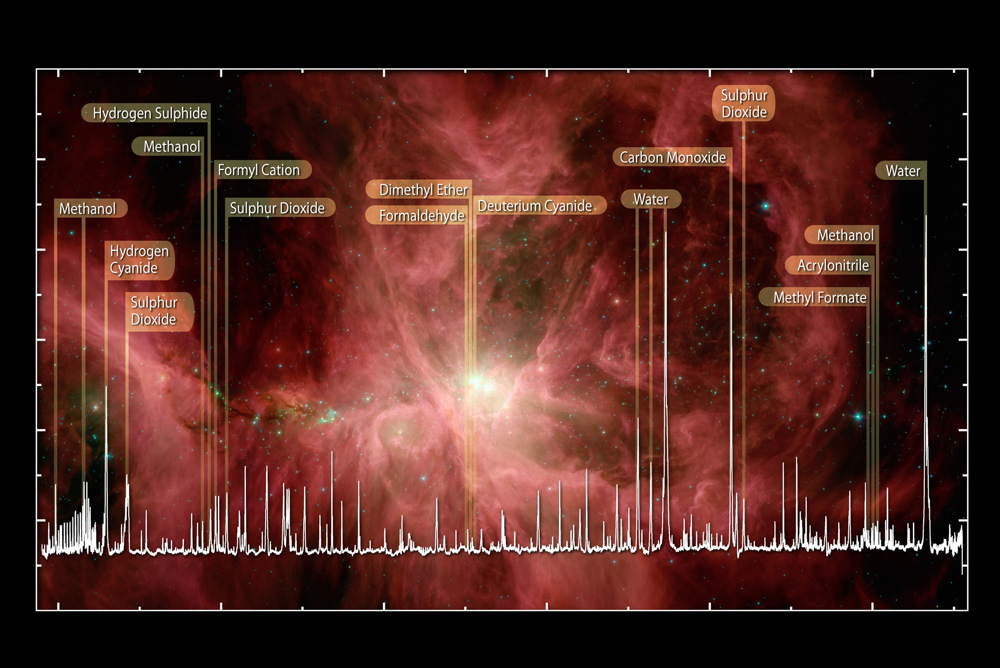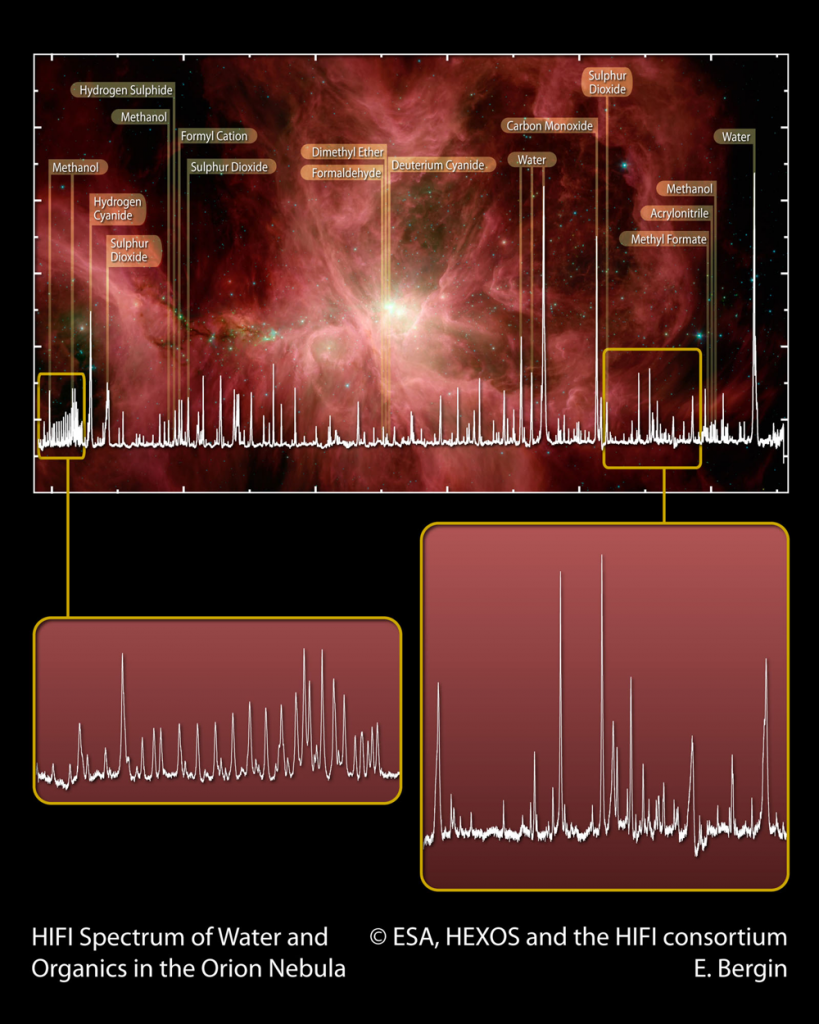| Basic Information | |
| What is this? | A region of the Orion Nebula |
| Where is it in the sky? | In the the constellation of Orion the Hunter (in his sword) |
| How big is it? | The Orion Nebula is more than 20 light years across, and appears about 1 degree across on the sky, but at any one time HIFI only a tiny fraction of that |
| How far away is it? | About 1300 light years |
| What do the colours represent? | The background image is an infrared image from NASA’s Spitzer satellite. The graph shows the light emitted by a range of molecules, some of which are labelled. |
Downloads
See this object in:
The HIFI instrument has measured the far-infrared spectrum of the Orion Nebula, breaking down the far-infrared light into a wide range of wavelengths. This reveals a series of spikes, or emission lines, caused by radiation which is emitted at particular wavelengths by particular elements and molecules. The HIFI spectrometer can see much finer detail in the spectrum than has been possible before, and has seen many elements. Frank Helmich, Principal Investigator of the HIFI instrument, said “We obtained this spectrum in a few hours and it already beats any other spectrum, at any other wavelength, ever taken of Orion. Organics are everywhere in this spectrum, even at the lowest levels, which hints at the fidelity of HIFI. The development of HIFI took eight years but it was really worth waiting for.”
Each type molecule emits radiation at a number of wavelengths with a well-defined pattern, which is known from laboratory experiments on Earth. When there are many molecules present, the picture is much more complicated, and many comparisons have to be made. So far, some of the elements discovered (and their chemical formulae) are: water (H2O), carbon monoxide (CO), formaldehyde (CH2O), methanol (CH3OH), dimethyl ether (CH3OCH3), hydrogen cyanide (HCN), sulphur oxide (SO) and sulphur dioxide (SO2). The identification procedure is ongoing, andmany more may be found in the future. Edwin Bergin, of University of Michigan and Principal Investigator of the “HEXOS” Key Programme for which this spectrum was taken, said “This HIFI spectrum, and the many more to come, will provide a virtual treasure trove of information regarding the overall chemical inventory and on how organics form in a region of active star formation. It harbours the promise of a deep understanding of the chemistry of space once we have the full spectral surveys available”.
Many of the molecules are “organic” molecules, which doesn’t mean that anything is alive, but simply that they contain particular arrangements of carbon and hydrogen. Molecules like these are precursors to life, and must have been present on the early Earth. Seeing these molcules in a star forming region such as Orion can provide key information as to how they are formed in such environments. This region of Orion will, in many millions of years, contain many stars and each one will probably have a planetary system. Knowing that these complex molecules are already present at this stage could provide clues as to the chances of life eventually emerging.
This spectrum was the first one to be released after HIFI was turned back on in January 2010. It had previously been turned off for 5 months due to a fault, probably caused by a cosmic ray hitting one of the computer chips.


